Book your stay
Best price guarantee
The grinding mill transformed
into the fashion hotspot
How a mill became a publishing house for fashion
1417
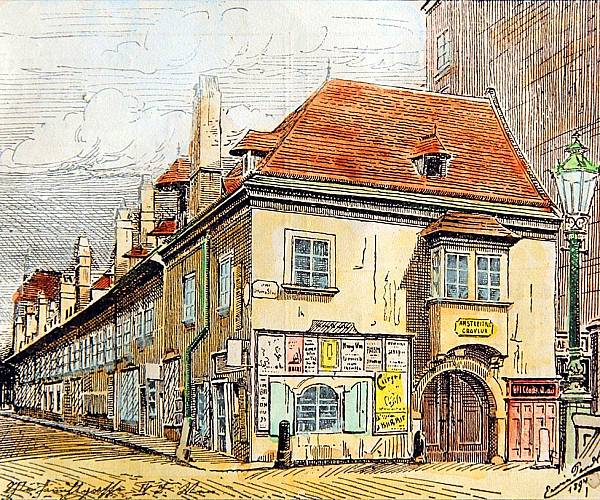
What is now Schleifmühlgasse 23-25, in 1417 was a mill dedicated to the milling of flour, at that time located directly on a branch of the Wienfluss river.
1570
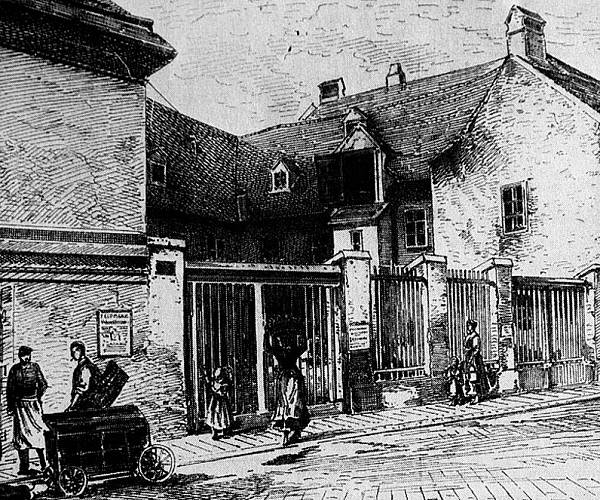
The year was 1570 when Hans Grebl built the first Austrian weapon grinding and polishing mill here. This is how the street got the name “Schleifmühlgasse” as “schleifen” in German means to grind and “Mühle” means a mill.
1786

Until the time when the stream was filled-in due to sedimentation, the mill was used as a washhouse for dying silk, a bakers' house and a music hall.

This house has long been
the residence of something beautiful
The "Wiener Mode" publishing house as a fashion hotspot in Vienna
Around the year 1900 Vienna was under the rule of the imperial crown at the height of its splendour and magnificence. Many of the great sights of today were built around this time – the opera house, Ringstraße and Secession building demonstrate how extraordinary beauty was aspired to at that time. It was during this time when the story of today's Hotel Drei Kronen first began.
1894

The old grinding mill was demolished. In it’s place stood the “Haus der Wiener Mode” built for the Viennese fashion publishing company run by Karl Colbert, a Viennese intellectual and writer.

The new building was the only one of its kind built solely for publishing purposes. The imposing house was designed by the renowned architect Ignaz Drapala and built by the construction company “Allgemeine Österreichische Baugesellschaft”.
Up to 1900
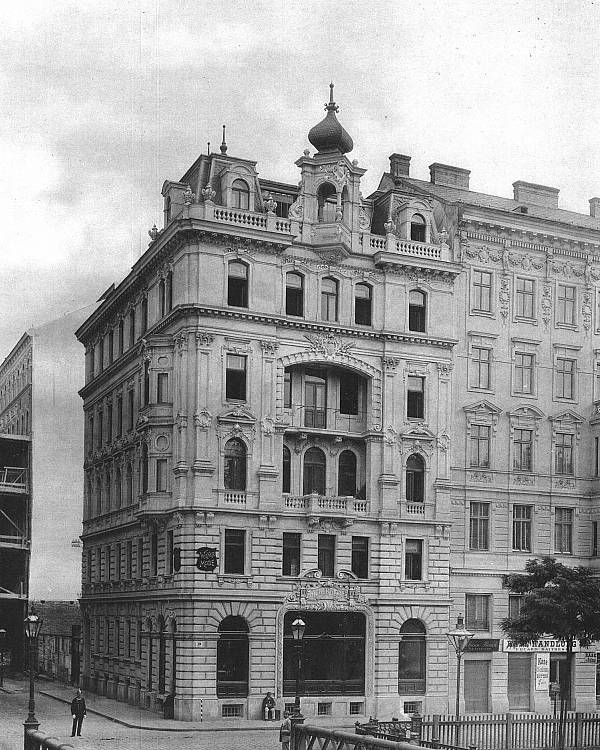
The publishing house acquired its own printing press and so the "Wiener Mode” fashion magazine was shipped to fashion enthusiasts all over the world, from Paris to New York or Berlin. Then, the magazine was just as influential on the world of fashion as VOGUE is today.

"Wiener Mode"
Beauty as religion
The year was 1894 and the Hotel Drei Kronen building was constructed in the style of historism – but it was never envisioned as a hotel in those days, instead it was designed to be a publishing house for the fashion magazine “Wiener Mode”. The magazine "Wiener Mode” is comparable with today’s VOGUE, as it was, at that time, the trendy magazine par excellence for the elite Viennese society and gradually gained great significance throughout the fashion capitals of the world.

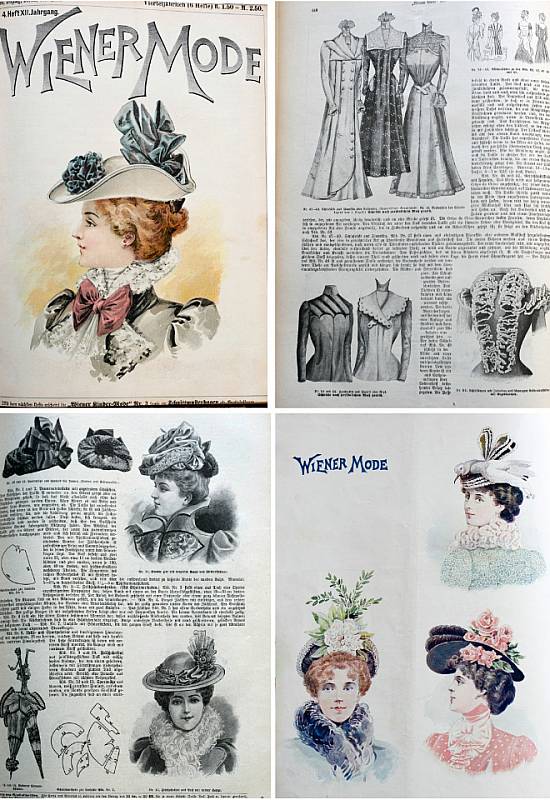


It was the golden age of Art Nouveau at this time in Vienna, the city quickly became the world metropolis of modern design. Today's Hotel Drei Kronen is perfectly situated between the Secession building and the Otto Wagner houses, the iconic Art Nouveau painter Koloman Moser was an illustrator for the "Wiener Mode" and frequented the Schleifmühlgasse often.
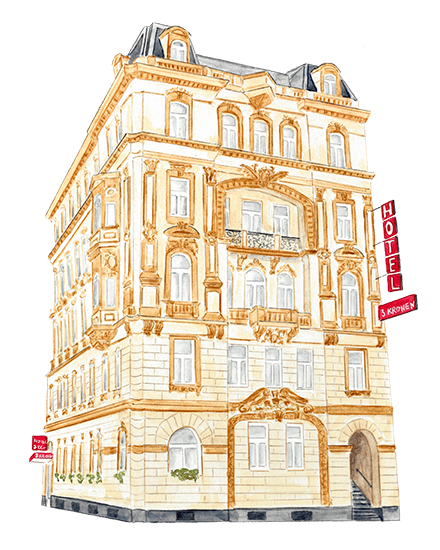
From a publishing house to a hotel
How a publishing house for fashion became a hotel
1900

The publishing house continued to expand and moved into a larger commercial building a few hundred yards further down Gumpendorfer Straße, so the building at Schleifmühlgasse 25 was adapted: The ground floor became business premises and elegant apartments as well as a photo studio were built on the top floor.
1907

The building was sold to the factory owner's wife Mathilde Biedermann Heller, who turned it into the Viennese guesthouse "Vindobona". However, her dream of hosting international guests was short-lived as one year later the property was sold to Marie Jiran.
1910 to 1974

As part of an enforced public auction, the hotel was bought by Viennese hotelier Alois Reinwein, who founded what is now the "Hotel Drei Kronen". After his death, the running of hotel was taken over by his widow Anna Reinwein and their daughter Edith Handel.

The three crowns
Tributes to the Austro-Hungarian monarchy
During this time, the three crowns (which represent the crown of St Stephen, crown of Rudolf II and St Wenceslas crown) were fixed to the house façade facing the Naschmarkt and symbolised the "three crowns" of the Austro-Hungarian monarchy.
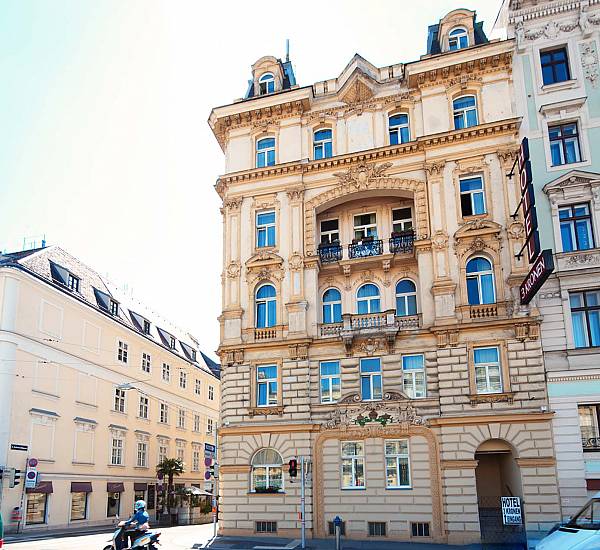

A traditional house with modern-day comforts
The future moved in long ago
Today, the building is enjoyed by guests from far and wide with its listed façade. Inside, there are numerous references to Art Nouveau. From the typical Viennese stairway with the original preserved spiral staircase spanning over 5 floors, to the characteristic high ceilings (over 340 cm) and the host family’s loving commitment to Vienna’s Workshops, manifest through the desks in the rooms as well as the wallpaper. All are still enjoyed by the guests visiting today.
1974

In 1974, a new era began for the building under owner Gustav Adler. The hotel was renovated and refurbished. Modern-day comforts arrived as each room was fitted with its own bathroom. Additional guest rooms were built on the fifth floor. For decades, Mrs. Ana Adler ran the hotel with great warmth and dedication and was very much appreciated and loved by all guests during this time.
2013 to today
The hotel remained within the family as it was taken over and bought by Daniel Adler. He has been in charge of the hotel since then and runs it together with his wife Katarina Adler. During this time, they arranged for the hotel to be completely renovated. With great attention to detail, 22 rooms were refurbished and modernised with sophisticated, high-quality premium facilities. The classical Viennese spiral staircase, the stairway and original ceramic tiles (anno 1894) were restored.






